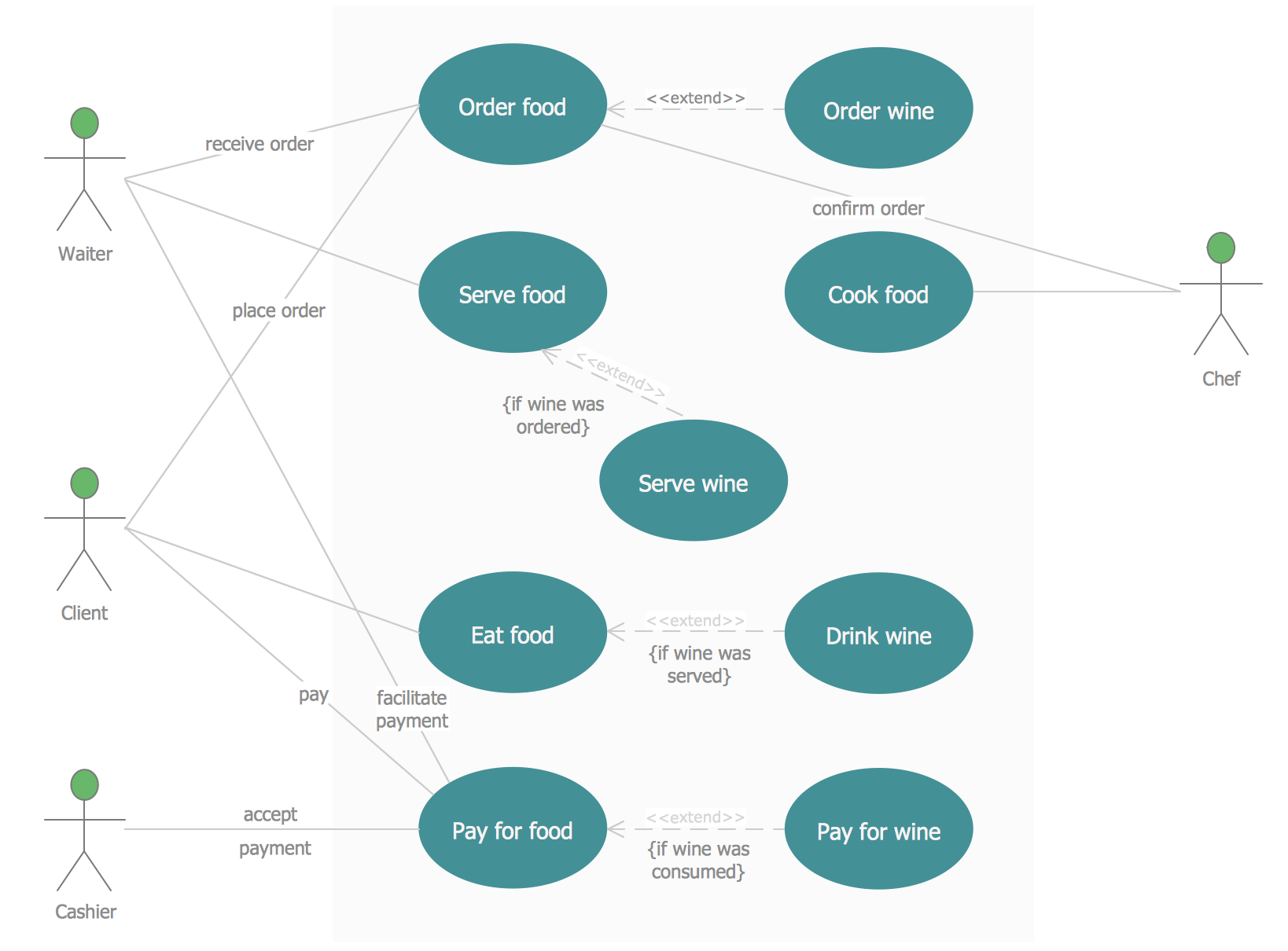

The extending use case is dependent on the extended (base) use case. 3 characteristics of an extend use case are: Here are a few things to consider when using the > relationship. As the name implies it extends the base use case and adds more functionality to the system. The dotted arrows toward the Main Use Case = Extend relationships. The rectangular box = the System Boundary An actor to the right would indicate someone in the back end interacting with the system. An actor to the left of the diagram typically represents the a person that will input a system. I will break down what each component means for you.Īctor = Stakeholder. Use-case engage the user in the requirement process.īefore we get into the steps of building use cases I wanted to break down the components of a Use Case diagram as well as that of a use case Use case Diagram Components:.Use-cases force developers to think from the end user perspective.Use-cases are relatively easy to write and read compared to the traditional requirement methods.

It is an easy means of capturing the functional requirement with a focus on value added to the user.The method creates a document that describes all the steps taken by a user to complete an activity.Ī use-case provides the following benefits − The use case is made up of a set of possible sequences of interactions between systems and users in a particular environment and related to a particular goal. This article goes over 3 Steps to Building UML Use Case Diagrams and Use Case NarrativesĪ use case is a methodology used in system analysis to identify, clarify and organize system requirements.


 0 kommentar(er)
0 kommentar(er)
